What is mold on plant soil? Most commonly, it is harmless saprophytic fungus. This is a white fluffy mold growing in clumps or a thin carpet on your indoor plant soils. Learn our methods on how to get rid of and manage mold on plant soil in this post.
Why is Mold Growing on my Plant Soil? Most commonly Molds grow on plant soil because mold thrives in warm, humid, low light conditions. These are conditions many indoor plants need for best growth.
For this reason, molds growing on soil is a common problem for indoor plant owners.
Is Mold on indoor plant soil harmful to your plants? Most molds sit on the surface of the soil and will not harm the plant.
Is Mold on Plant Soil Harmful to People?
Houseplant soils are perfect breeding grounds for mold. That white fluffy stuff you see on the soil does not harm plants. But what about you? For MOST people soil molds are harmless.
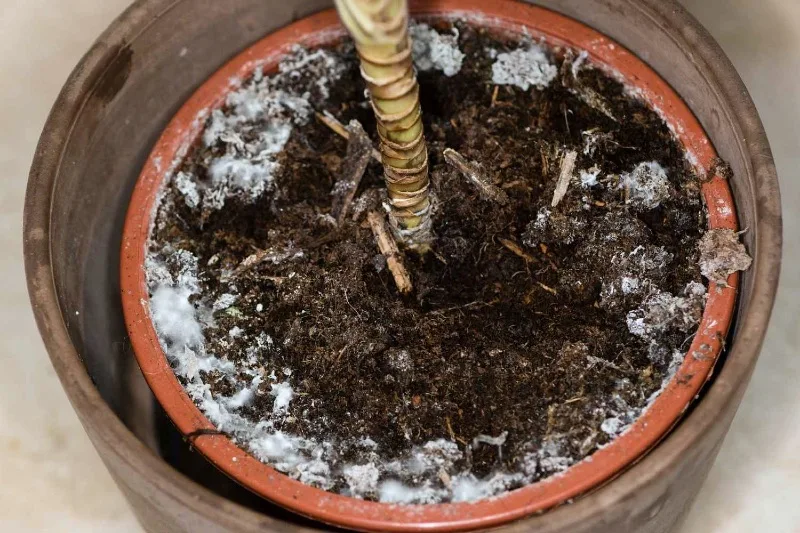
White molds on plant soil called saprophytic molds are most often what we see on houseplant soils. However, there are always a TINY population of bad actors that MAY be a problems for VERY few people.
If you have a chronic respiratory illnesses like severe asthma, an auto immune disease or severe allergies to molds and fungus you might be susceptible to even otherwise harmless common soil molds.
We know indoor plants can benefit people by providing emotional and even physical benefits to us. Follow best practices for soil and plant management to ensure houseplants in soil are a healthy part of your Homelife.
The techniques we outline here will go along ways toward handling this potential health concern for our most vulnerable plant parents and family members.
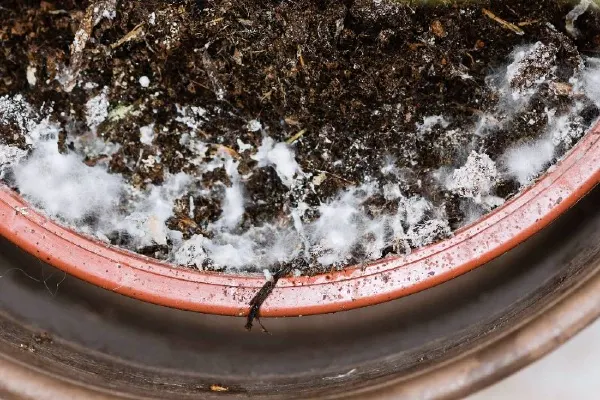
Plants are very beneficial to people emotionally and as an environmental addition to your home.
Read more about why houseplants are beneficial to people here .
The Contented Plant
It is easy to see a visual like moldy soil and think it is making your plants sick. But is it? Probably not.
It’s more likely you have some plant management methods that are encouraging molds AND ALSO harming your plants.
We help identify positive methods for mold-free healthy plant management below.
How to Get Rid of Mold on Plant Soil:
Here are some ideas that will help deter molds and promote healthy plants.
Molds on the soil of plants may be harmless to plants, and mostly people, but it is still unsightly. Even more important, depending on the plants you grow, molds may indicate a need to change your plant management methods.
Are your plants healthy? OR are Drooping yellowing leaves a problem for some of your plants with moldy soil?
Plant Management Methods to Deter Molds:
- Are you overwatering? Molds grow well on constantly moist soils with poor drainage. Most houseplants do not like constantly wet soils. On our site, we have a great guide on how to properly water your houseplants.
- Does your plant pot have a good drainage system? Use only well-draining pots to prevent the soil from holding too much water and attracting molds.
- Do you top water all the time? This keeps the topsoil constantly wet attracting mold spores (and fungus gnats too). Try bottom watering instead.
- Heavy plant foliage overhanging the pot eliminates airflow to the soil. Molds love warm wet stagnant places. Try pruning the bottom foliage back to allow air and light to your soil, if possible.
- Low light conditions make soils more likely to mold. Molds love dark or dim places. Try moving the plant into a brighter location.
- Stagnant air encourages mold growth on plant soils. More airflow around the plant pot will allow the topsoil to dry and discourage mold spores from settling into your soils. Add a small fan to your plant room.
- Molds love organic-rich materials like wood bark which is often used in soil mixes and for growing mediums for aroids like orchids. Replant into a less organic rich soil mix to deter molds.
- Misting soil wets the top of the plant soil, keeps it wet, and attracts molds. Avoid misting your plants too frequently.
- Wipe the leaves occasionally to clean off mold spores. Mold spores travel through the air and often settle onto the top of plant leaves. Occasionally using a wet paper towel to wipe your plant leaves can greatly reduce mold growth.
- Avoid Heavy dense soil mixes that trap and hold water. Using extra perlite is a great way to add air into your soil.
- If your plant is full of mold, Repot your plant into light sterile soil.
- Remove dead leaves so they don’t rot into the soil. Dead matter attracts decomposers like molds.
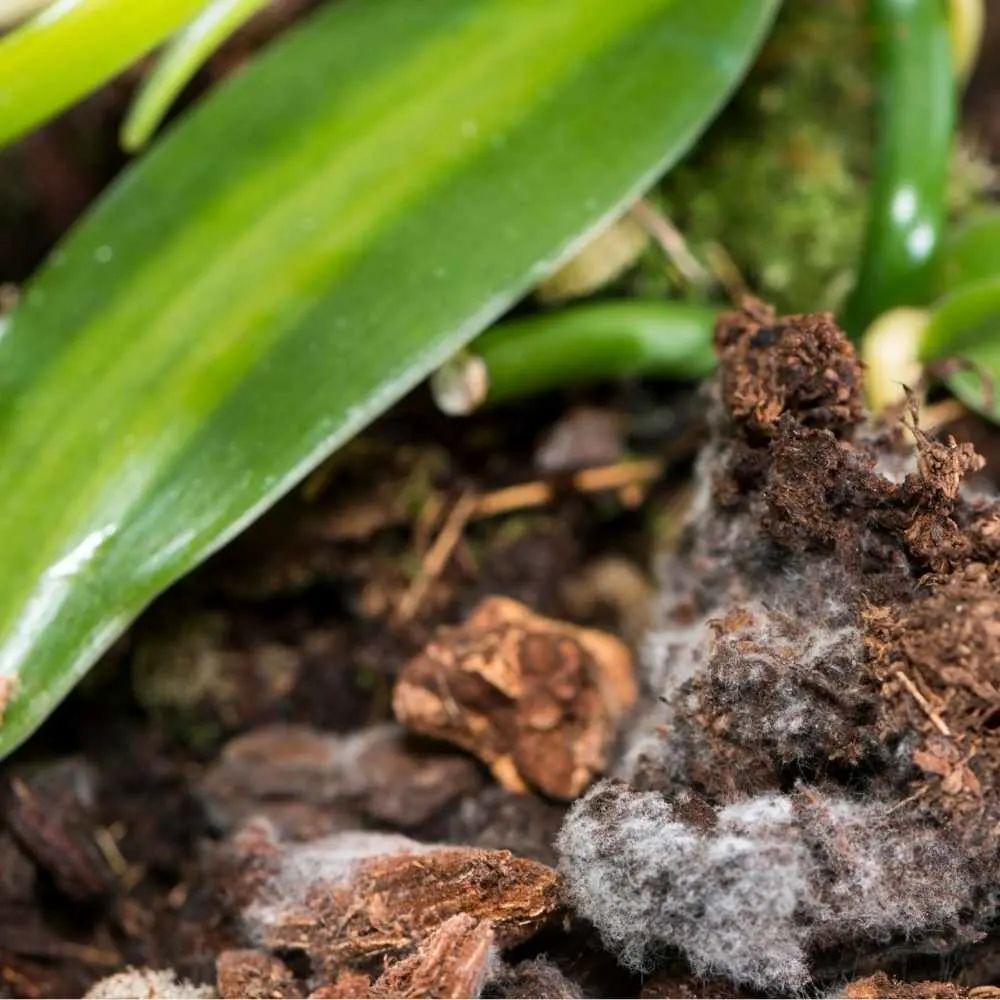
Hydrogen Peroxide Kills Fungus and Molds on Plant Soils:
Hydrogen peroxide has many great uses and benefits for plants. One of the benefits it offers is its ability to kill all fungus, molds, and other pathogens living in your plant’s soil. Read all about how hydrogen peroxide helps plants.
As a side benefit hydrogen peroxide also kills nasty fungus gnat larvae in the soil and root rot bacterium.
We recommend occasionally doing a drench with hydrogen peroxide for all the benefits we discuss in our linked post.
Killing mold spores off with occasional drenches like this is a good plant management tool to keep in your toolbox.
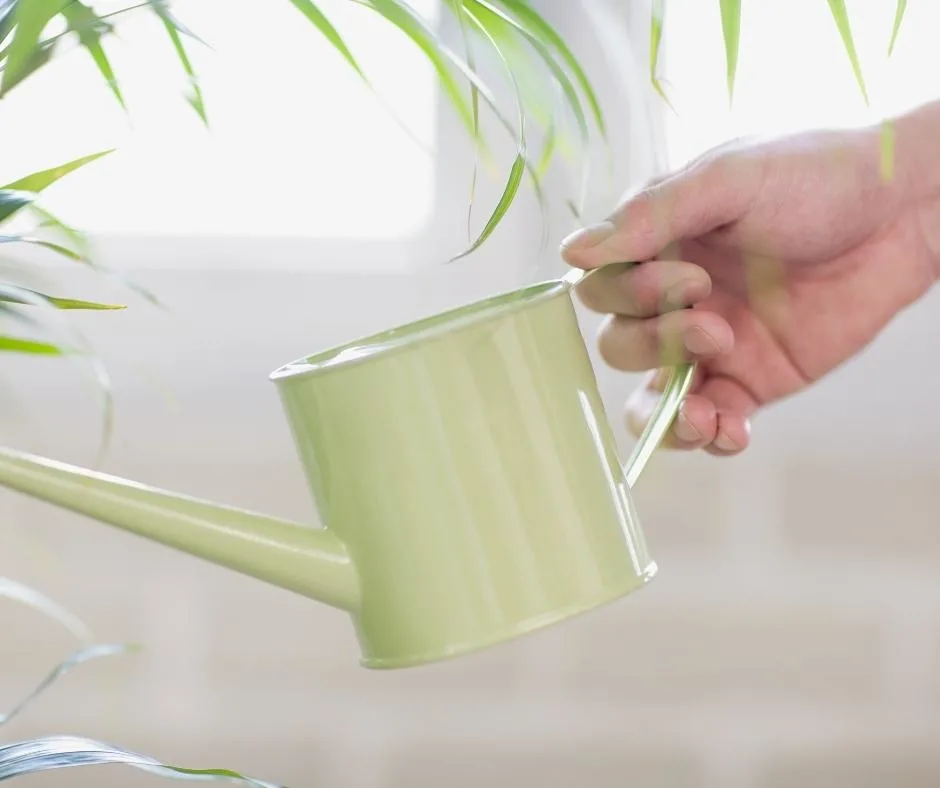
Hydrogen Peroxide Drench:
Here’s the recipe and instructions:
- Mix in a pouring container, 1 tsp. 3% hydrogen peroxide per cup of water.
- You will need at least a quart of this drench per plant. Maybe more if you have a large pot of soil.
- Hopefully your pot has a drain hole in the bottom. If not you will not want to use this drench. Repot your plant in fresh sterile soil in a draining pot instead.
- Pour the drench through the plant-soil so the soil is thoroughly drenched and water drains out of the pot. Give the plant a good soaking and be sure to let it drain well.
Non Toxic Sprays to Eliminate Molds:
Here are three spray formulas you can use to kill or inhibit molds on plant soils.
- Neem oil spray. Spray every leaf and stem on the plant.
- Milk diluted 1:10 parts with water also makes an effective organic spray for powdery mildew.
- 1 tsp. of Bicarbonate of soda mixed with a liter of water.
You want to thoroughly spray the molds until they are completely wet with these spray formulas. Repeat weekly until you see the molds shrink and die.
Choosing a Soil Free Substrate:
Plants can grow without soils. You can change your growing system to protect your health or you just don’t want soil molds to look at.
One option is to switch your plants over to a semi hydroponic substrate like LECA clay balls. Or another fully hydroponic growing system.
This will eliminate any possibility of molds and fungus traveling from your plant soils to you. Since no soil is involved in these growing systems.
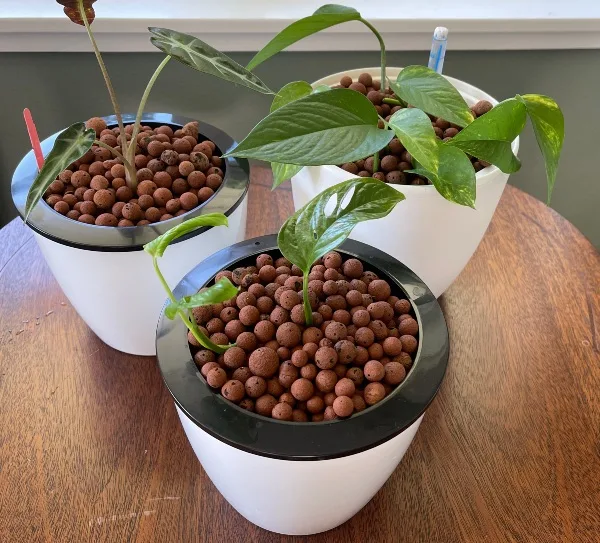
Combine These Tips and Methods For Healthier Plants.
We recommend you combine these plant management techniques, hydrogen peroxide drenches and sprays to kill and deter molds on plant soils while actually benefitting your plants in many ways.
Cleansing the soils of molds, and other pathogens, combine with sprays that also deter and kill off pests, remove dust and leaf borne mold spores.
This is how to get rid of mold on plant soil and, at the same time, improve the health and management of your indoor plants.
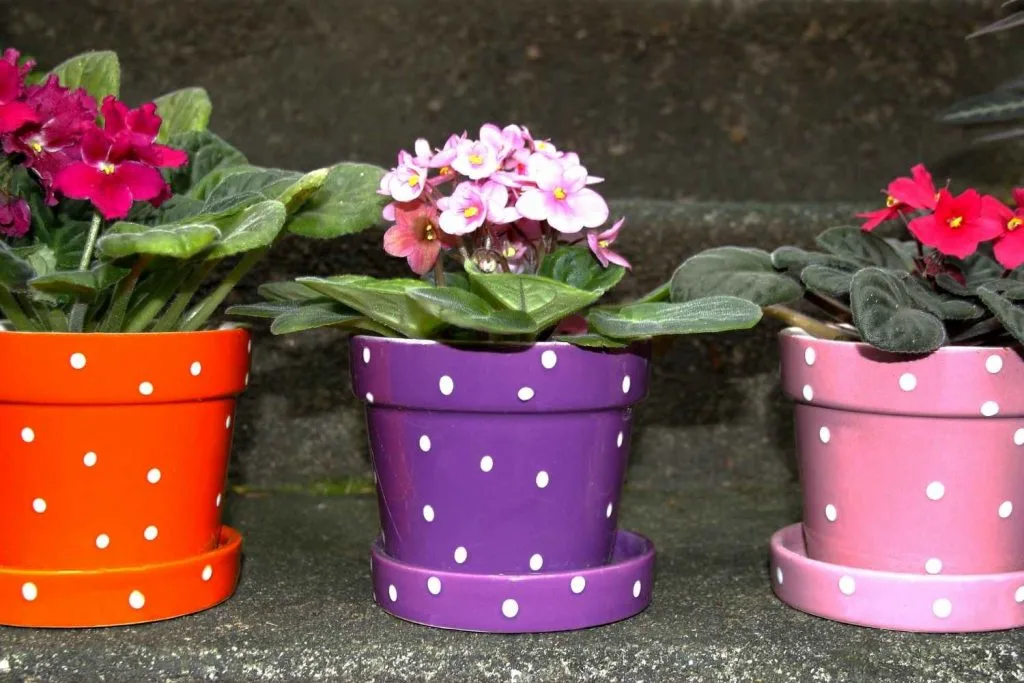
References:
Follow Us:
Find us on YouTube, Instagram , Pinterest and TikTok! We love to Plant chat. We also comment, like and occasionally share your content to our daily stories. We’d love to see your plants. Share your joy in your houseplants. Happy Planting!
Related Content:
Latest Posts:
- 5 Fantastic Cactus Species for Your Home
- Pygmy Date Palm Trees
- Bromeliad Care Guide and Profile
- Growing Gloxinia Plants in Your Home
- Staghorn Ferns Care and Maintenance
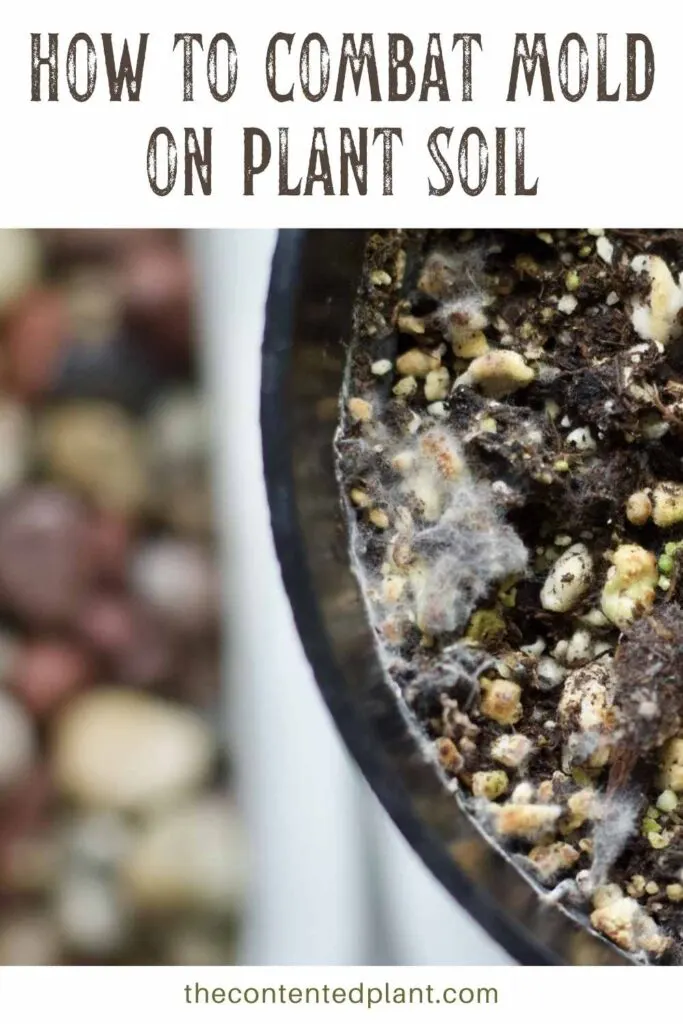

How to Get Rid of Powdery Mildew on Plants-Treatment Guide - The Contented Plant
Friday 18th of March 2022
[…] compost plants with pests, molds and fungal infections. You will just spread these problems into your […]